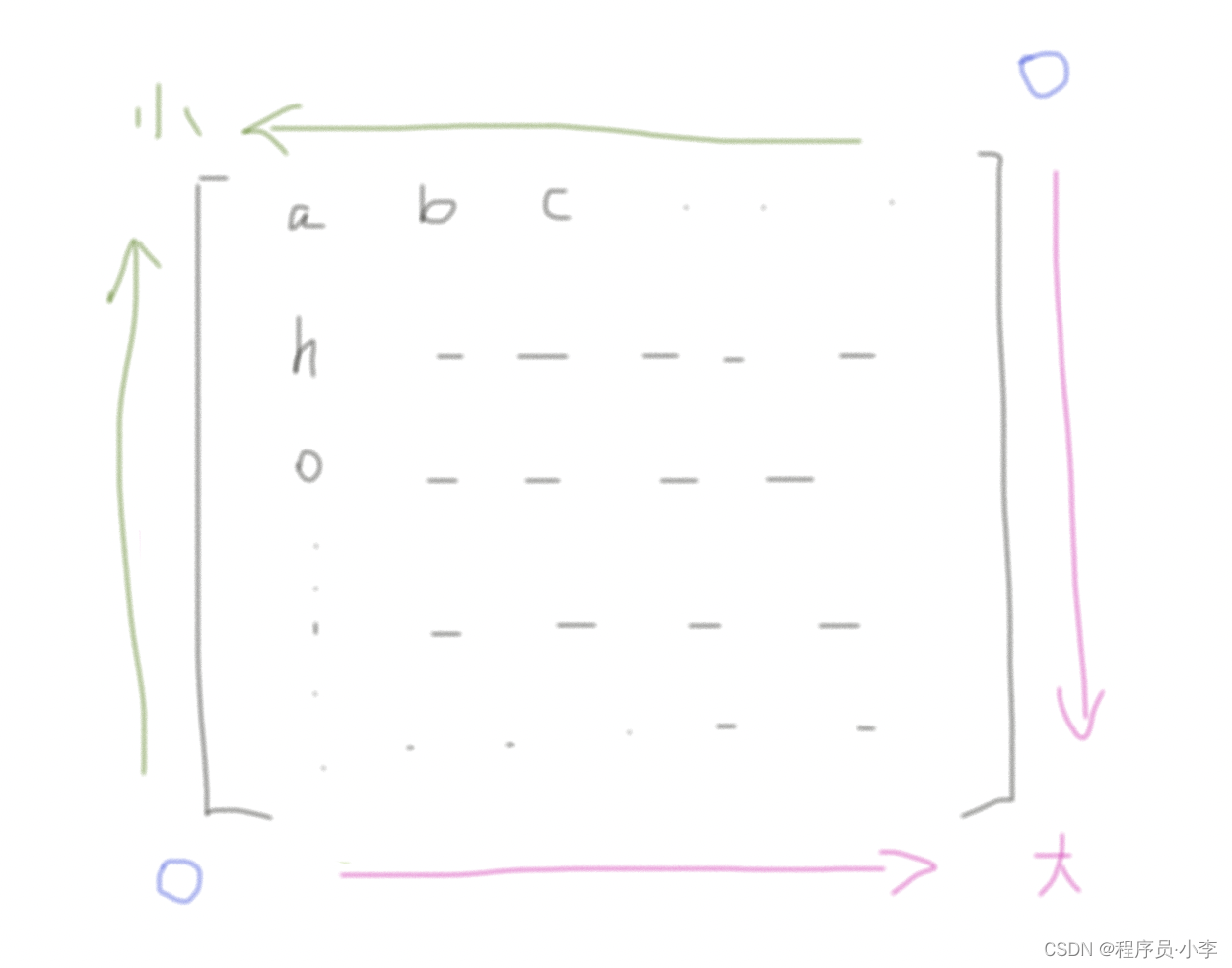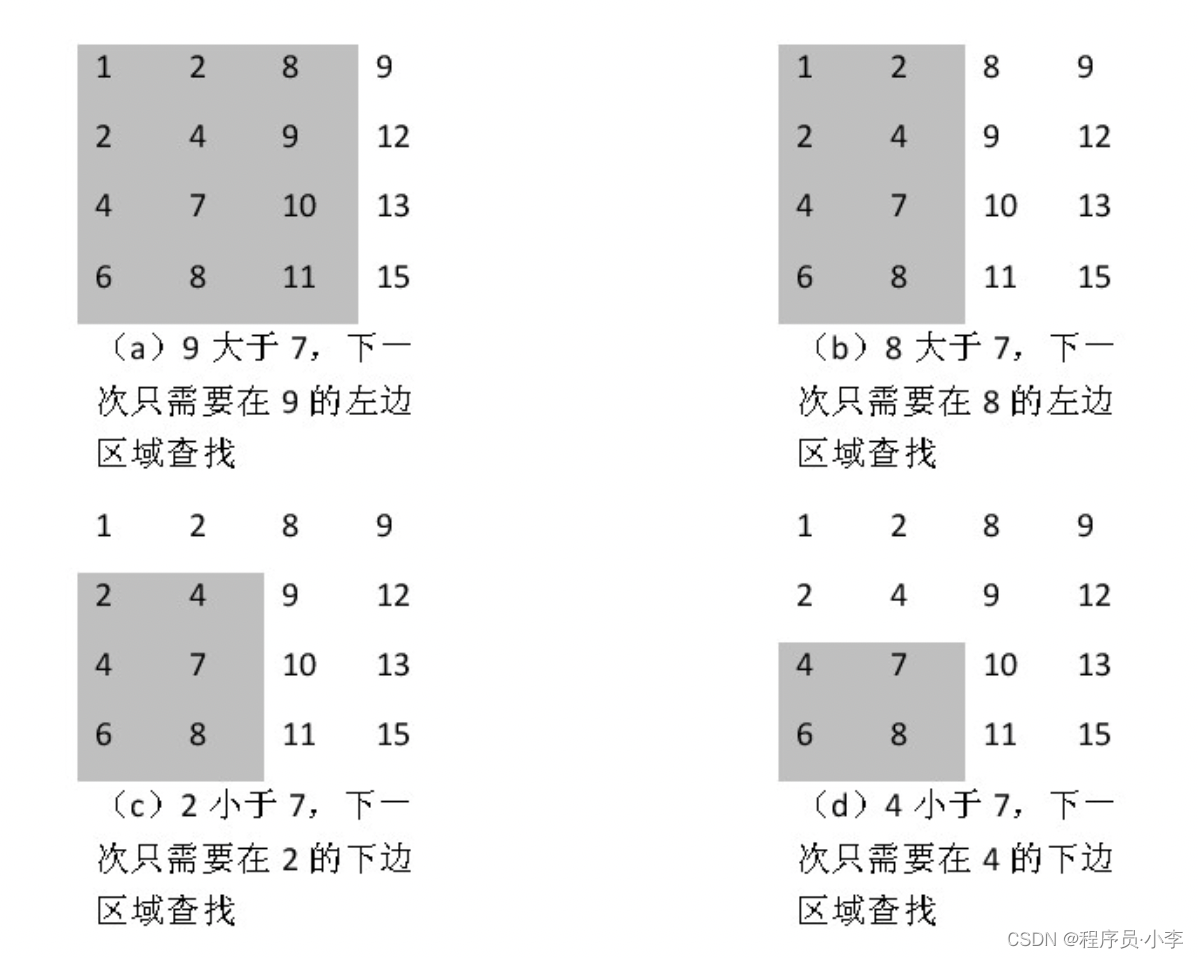[
[1,2,8,9],
[2,4,9,12],
[4,7,10,13],
[6,8,11,15]]
给定 target = 7,返回 true。
给定 target = 3,返回 false。
这个矩阵有这样的特征:

左下角和右上角相对于左上角和右下角具备优势,因为一个方向增大,一个方向减小,可以逐步移动。
以查找数字7为例:

第一步,右上角数字是9, 9 > 7 ,则一定不会在最后一列了,因为9下方的数字都比9大,只可能在9的左侧,那么剔除第4列。
第二步,右上角数字是8, 8 > 7 ,则一定不会在这一列了,因为8下方的数字都比8大,只可能在8的左侧,那么剔除第3列。
第三步,右上角数字是2,2 < 7,那么数字7很可能存在2的下方或者右侧,但是右侧的列都被踢除了,所以只能在2的下方。2左侧的值都比2小,因此剔除第1行。
第四步,右上角数字是4,4 < 7,那么数字7很可能存在4的下方或者右侧,但是右侧的列都被踢除了,所以只能在4的下方。4左侧的值都比4小,因此剔除第2行。
第五步,右上角数字是7,7 = 7,找到了。
我们发现如下规律: 首先选取数组中右上角的数字。如果该数字等于要查找的数字,查找过程结束; 如果该数字大于要查找的数字,剔除这个数字所在的列;如果该数字小于要查找的字,剔除这个数字所在的行。
右上角搜索:
public boolean Find(int target, int [][] array) {
if (array == null || array.length < 0 || array[0].length < 0){
return false;
}
int rows = array.length;
int cols = array[0].length;
int row = 0;
int col = cols - 1;
while (row <= rows - 1 && col >= 0){
if (array[row][col] == target){
return true;
} else if (array[row][col] > target){
col--;
} else {
row++;
}
}
return false;
}左下角搜索:
public boolean Find(int target, int [][] array) {
if (array == null || array.length < 0 || array[0].length < 0){
return false;
}
int rows = array.length;
int cols = array[0].length;
int row = rows - 1;
int col = 0;
while (row >= 0 && col <= cols - 1){
if (array[row][col] == target){
return true;
} else if (array[row][col] > target){
row--;
} else {
col++;
}
}
return false;
}
本文含有隐藏内容,请 开通VIP 后查看